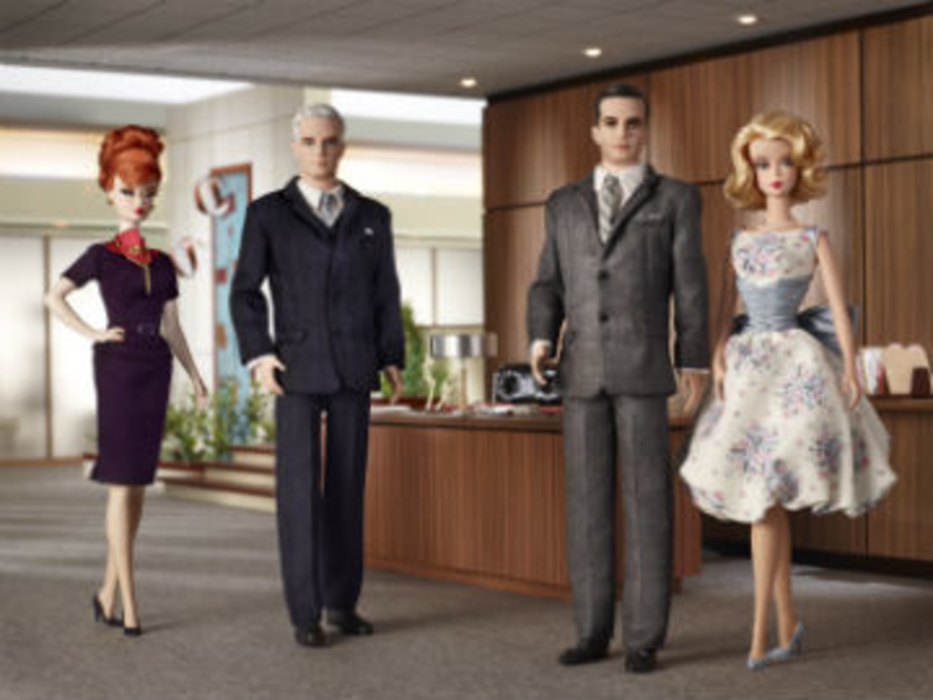A new customer is to a marketer what a new Barbie was to me at age five: Shiny, new, and a must-have. I would spend hours doting over my new Barbie while my old dolls—toys I once loved and cherished—collected dust in my play bin. Marketers treat their customers the same way. They give new customers tons of time, attention, and resources while their old, loyal customers are tossed aside. In fact, 63% of marketers deem new customer acquisition as the most important advertising goal, according to KISSmetrics via an infographic by FiveStars.
But my parents wanted me to appreciate the Barbies I already had. So, they reserved new Barbies for special occasions, such as a birthday, Christmas, or the occasional straight-A report card. Their parenting forced me to pay attention to the Barbies I already had instead of focusing on the next big doll in the bright pink box. This made me appreciate my toys more. I engaged with my Barbies, and I developed storylines for each of their pretend lives. And because I grew to appreciate my Barbies, I would ask for things to make their pretend lives better, such as a pink Porsche or a new outfit.
Marketers should treat their customers the same way. Instead of focusing on the customers they don’t have, marketers should focus on the loyal customers they already do have and how they can reward them.
“Every marketer or business owner needs to manage marketing for maximum impact given constrained time, budget, and resources,” says Chris Luo, VP of marketing for the customer loyalty network FiveStars. “Oftentimes, especially if someone has a reasonably-sized existing customer base, the highest return for limited time and budget is to focus on retention and upsell. Your existing customer base will have the highest response rates to your marketing and, especially if you can set up ongoing campaigns like loyalty programs, it can be marketing that runs on its own and pays continual dividends over time.”
And while attending to loyal customers may seem like a small gesture, it can have a big impact on companies’ bottom lines. According to FiveStars, people who have visited at least 10 times make up 20% of a company’s customer base, and that 20% accounts for 80% of a company’s total revenue and 72% of total business visits. In addition, loyal customers spend ten times more than new customers over the course of their lifetime.
On the flip side, new customers may not be as enamored with a company as the company is with them. New customers like to receive something, like a promotion or an offer, before committing to a brand. But that’s not always in the company’s best interest. According to Inmar and reported via FiveStars, the average conversion rate from promotions sent to new customers totals less than 1%. In addition, only a little over a third of daily deal customers (36%) will spend more than the price of the discounted offer and less than a fifth of daily deal customers will return and pay full price, cites Rice University Professor of Management Utpal Dholakia in a study reported via FiveStars.
To ensure that companies maintain their loyal customers, Luo advises implementing a loyalty program that includes incentives. He says these programs drive loyalty and return visits.
“We’ve seen that across various verticals that these incentives can drive on average 12-44% increase in customer visit frequency,” he says. “The second thing I would recommend is recognizing your VIPs. These are the 20 percent of customers who drive 80 percent of your revenue. They should be recognized for their loyalty at the point-of-sale and get the best service and best promotional offers, since they drive the biggest leverage for your business.”
And although I grew to appreciate my Barbies, that’s not to say I never asked for a new one. However, knowing which dolls were my favorite (I was obsessed with the Disney Princess collection) helped me identify which toys I wanted more of in the future.
Luo acknowledges that customer acquisition is still an important part of a company’s growth. However, he says these programs often require experimentation to see which customers are best for business.
“Acquisition programs are often necessary to drive order of magnitude changes in growth,” he says. “While less efficient than retention programs, they are often necessary to change growth trajectories, but to optimize them, they will require much more experimentation and trial and error.”
So stop being a customer collector and show your loyal customers some love. And while a Malibu Dream House or a princess gown might be a bit too much, rewarding your loyal customers is critical to ensuring that they don’t feel toyed around.








